Men missing from the HIV care continuum in sub-Saharan Africa: a meta-analysis and meta-synthesis
- PMID: 35324089
- PMCID: PMC8944222
- DOI: 10.1002/jia2.25889
Men missing from the HIV care continuum in sub-Saharan Africa: a meta-analysis and meta-synthesis
Abstract
Introduction: Men are missing along the HIV care continuum. However, the estimated proportions of men in sub-Saharan Africa meeting the UNAIDS 95-95-95 goals vary substantially between studies. We sought to estimate proportions of men meeting each of the 95-95-95 goals across studies in sub-Saharan Africa, describe heterogeneity, and summarize qualitative evidence on factors influencing care engagement.
Methods: We systematically searched PubMed and Embase for peer-reviewed articles published between 1 January 2014 and 16 October 2020. We included studies involving men ≥15 years old, with data from 2009 onward, reporting on at least one 95-95-95 goal in sub-Saharan Africa. We estimated pooled proportions of men meeting these goals using DerSimonion-Laird random effects models, stratifying by study population (e.g. studies focusing exclusively on men who have sex with men vs. studies that did not), facility setting (healthcare vs. community site), region (eastern/southern Africa vs. western/central Africa), outcome measurement (e.g. threshold for viral load suppression), median year of data collection (before vs. during or after 2017) and quality criteria. Data from qualitative studies exploring barriers to men's HIV care engagement were summarized using meta-synthesis.
Results and discussion: We screened 14,896 studies and included 129 studies in the meta-analysis, compiling data over the data collection period. Forty-seven studies reported data on knowledge of serostatus, 43 studies reported on antiretroviral therapy use and 74 studies reported on viral suppression. Approximately half of men with HIV reported not knowing their status (0.49 [95% CI, 0.41-0.58; range, 0.09-0.97]) or not being on treatment (0.58 [95% CI, 0.51-0.65; range, 0.07-0.97]), while over three-quarters of men achieved viral suppression on treatment (0.79 [95% CI, 0.77-0.81; range, 0.39-0.97]. Heterogeneity was high, with variation in estimates across study populations, settings and outcomes. The meta-synthesis of 40 studies identified three primary domains in which men described risks associated with engagement in HIV care: perceived social norms, health system challenges and poverty.
Conclusions: Psychosocial and systems-level interventions that change men's perceptions of social norms, improve trust in and accessibility of the health system, and address costs of accessing care are needed to better engage men, especially in HIV testing and treatment.
Keywords: Africa South of the Sahara; HIV infections; HIV testing; continuity of patient care; men; qualitative research.
© 2022 The Authors. Journal of the International AIDS Society published by John Wiley & Sons Ltd on behalf of the International AIDS Society.
Figures





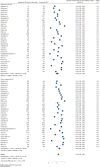
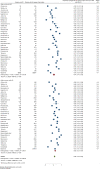








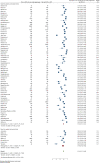
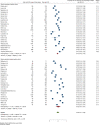
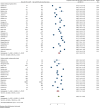



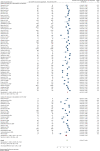
References
-
- Osler M, Cornell M, Ford N, Hilderbrand K, Goemaere E, Boulle A. Population‐wide differentials in HIV service access and outcomes in the Western Cape for men as compared to women, South Africa: 2008 to 2018: a cohort analysis. J Int AIDS Soc. 2020;23(S2):e25530. 10.1002/jia2.25530. - DOI - PMC - PubMed
-
- Takuva S, Brown AE, Pillay Y, Delpech V, Puren AJ. The continuum of HIV care in South Africa: implications for achieving the second and third UNAIDS 90‐90‐90 targets. AIDS. 2017;31(4):545–52. - PubMed
-
- Druyts E, Dybul M, Kanters S, Nachega J, Birungi J, Ford N, et al. Male sex and the risk of mortality among individuals enrolled in antiretroviral therapy programs in Africa: a systematic review and meta‐analysis. AIDS. 2013;27(3):417–25. - PubMed
-
- Byanyima W. UNAIDS Data. 2020.. [cited 2021 Oct 14]. Available from: https://www.unaids.org/sites/default/files/media_asset/2020_aids‐data‐bo...
Publication types
MeSH terms
Grants and funding
LinkOut - more resources
Full Text Sources
Medical

